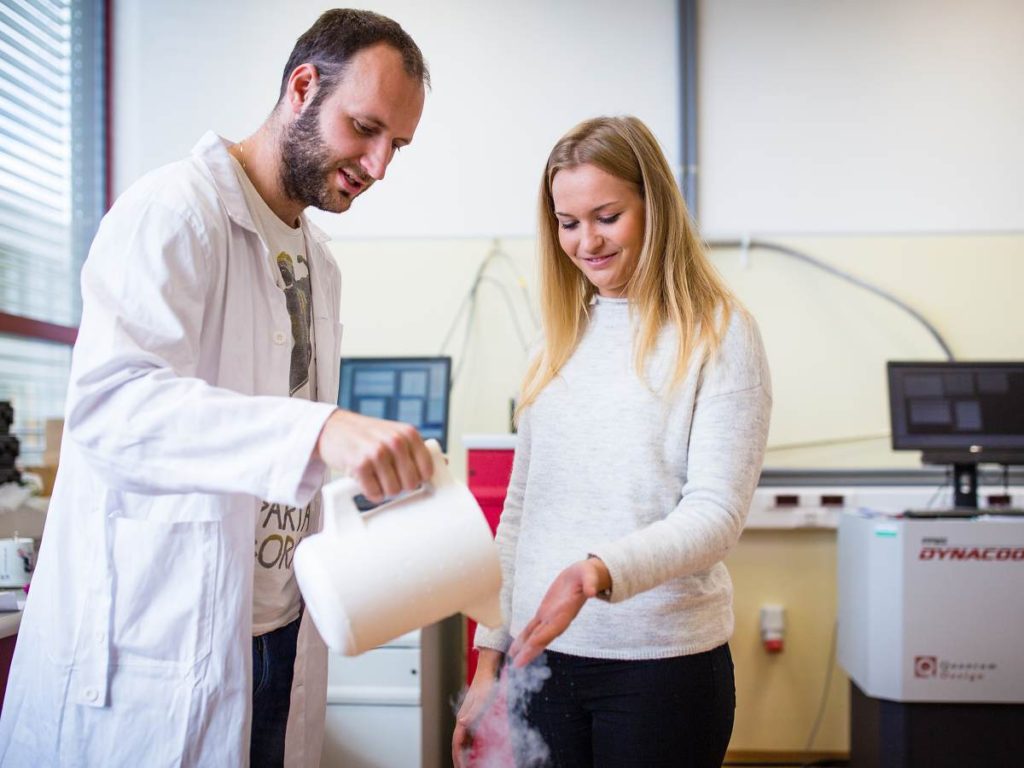CATRIN welcomes the Night of Scientists for the first time on its premises
Researchers from the Czech Advanced Technologies and Research Institute – CATRIN will present the manifestations of time in material and biological sciences to visitors of this year’s Night of Scientists. On Friday, September 24, from 5:00pm to 10:00pm, visitors will not only be able to see the cutting-edge laboratories of the science centre, but also watch a levitating magnet during experiments and science shows, shed light on fluorescent materials, learn why leaf colorants decompose at different rates during the process of leaf ageing, see hundred-million-year-old insect fossils in amber or observe fireflies and their larvae.
“We are very pleased to be able to invite visitors directly to our premises on Šlechtitelů Street. We believe that they will find their way to us. We will guide them through selected laboratories, introduce them to our research. We don’t want the visitors to be passive observers, but they will be able to try out some of the phenomena that we are going to present with simple experiments,” said CATRIN Director Pavel Banáš. Those interested can also use a special bus line that will leave the Faculty of Science building from 17. listopadu street at regular intervals.

Guided tours and experiments
For those interested in a guided tour, a guide will be available every half an hour to take them to several of CATRIN’s major laboratories – the Regional Centre for Advanced Technologies and Materials. “We’ll look at the magnetic measurements, electron microscopy and supercomputer labs. Visitors will learn what the instruments are used for and what research the scientists here are working on,” explained Jakub Navařík.
Scientists at CATRIN will also put up scientific stands. Anyone who likes glowing balloons, T-shirts or frisbees, wants to learn how to “walk on water” with the help of a non-Newtonian liquid, how the world’s fastest train works, or try the experiment that has attracted many people interested in science to chemistry is welcome.
There will also be research on plants or fireflies
There will also be space for plant or insect research. “Would you like to see what the fireflies from Jiří Trnka’s books and their larvae actually look like? Would you like to see how they feed? At our stand you will have the opportunity to meet representatives of beetles and we will show you how we study these interesting animals using genetic methods,” invites Ladislav Bocák, head of the Biodiversity and Molecular Evolution research group.
Plant research will be approached by phytochemists who will answer questions such as why forests are full of colour in autumn or why green chlorophylls decompose faster in leaves than yellow and orange carotenoids. They will also talk about the preparation of transgenic plants and new breeding methods. Visitors will be able to take away small gifts including balloons or a science comic book or dress up as a scientist and take a picture by the photo wall.
The programme also takes place at the neighbouring Institute of Experimental Botany
The partner Institute of Experimental Botany of the Academy of Sciences of the Czech Republic will also present science on the campus in Holice. Scientists there will introduce guests to, among other things, a global project to decipher the genetic information of wheat, technology for sorting chromosomes and reveal what the genetic information of a new species of man-made grass looks like, which can help in the fight against climate change. They will also talk about saving the genetic wealth of the banana tree, without which it would be impossible to breed new varieties of this crop.
Night of Scientists has been taking place in the Czech Republic since 2005 at universities, scientific institutes, observatories and other institutions. A detailed programme including registration for the events is available at https://www.nocvedcu.cz/.

